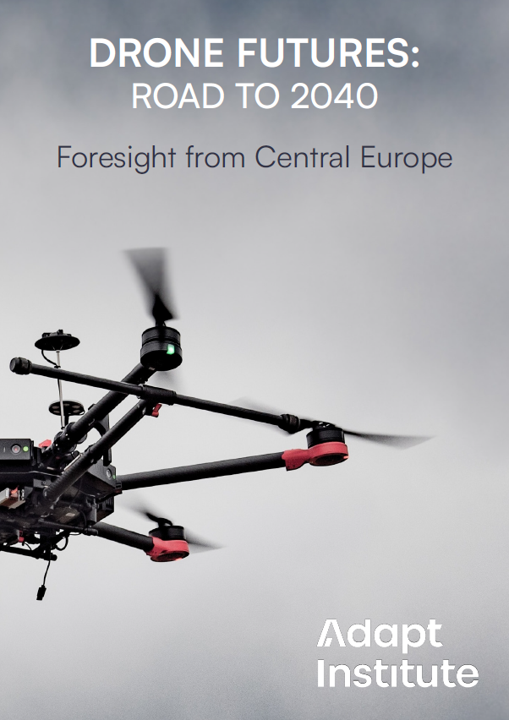
Attempts to predict the future may be a waste of time,
not trying to understand it is a waste of opportunity.
Marcus Tullius Cicero made a distinction between 'facta: what is accomplished and can be taken as solid' and 'futura: what shall come into being, and is as yet undone'.
The data we have are from the past. We don't have data from the future.
Strategic foresight can lead to a better understanding of the future, helping to avoid risks and seize opportunities that the future holds.
DRONE FUTURES: ROAD TO 2040
Central Europe faces many serious challenges – security, economic competitiveness and demography being just the most obvious. Harnessing drone technology may become part of the solutions.
The future is always in the making. Strategic foresight is not about predicting the future – it invites to engage in a practical exploration of the forces shaping the future.
Facta Pro Futura is proud to have partnered with the Adapt Institute on DRONE FUTURES: ROAD TO 2040 – Foresight from Central Europe. This report is aimed to help those who believe in agency and wish to identify opportunities and risks before they fully emerge.
Explore eight key drivers of change, immerse yourselves in four alternative drone futures and reflect on ten recommendations designed to unlock the vast opportunities of the emerging low-altitude economy.
Did you know that...
... current global electricity grids could wrap around the Earth 2,000 times? The total length is 80 million kilometres, yet it is not enough. According to the IEA analysis, the world might need extra 50 million kilometres of grids by 2040 to satisfy growing demand for electricity. In addition, 30 million kilometres of existing grids need to be refurbished. Both green and digital transition thus pose not just a major infrastructural and investment challenge, but also a unique business opportunity. At the same time, natural resources crucial for electricity grids infrastructure, such as aluminium, copper or steel may witness increased demand and accompanying geopolitical competition.
see more here
Statistics
According to preliminary Eurostat estimates from January 2025, GDP in the euro area remained unchanged in the fourth quarter of 2024, while in the EU, it increased by 0.1% compared to the previous quarter. In the third quarter of 2024, GDP grew by 0.4% in both regions. A first calculation of annual GDP growth for 2024, based on seasonally and calendar-adjusted quarterly data, suggests an GDP growth of 0.7% in the euro area and 0.8% in the EU in 2024.
see more here
The term of the week
Horizon Scanning
Technique for detecting early signs of potentially important developments through a systematic examination of potential threats and opportunities. Horizon scanning (also known as environmental scanning) is the foundation of strategic foresight. It is a systematic process of exploring the external environment to identify potential threats, opportunities, disruptions, uncertainties or likely developments relevant to the issue or system under study.
see more here

